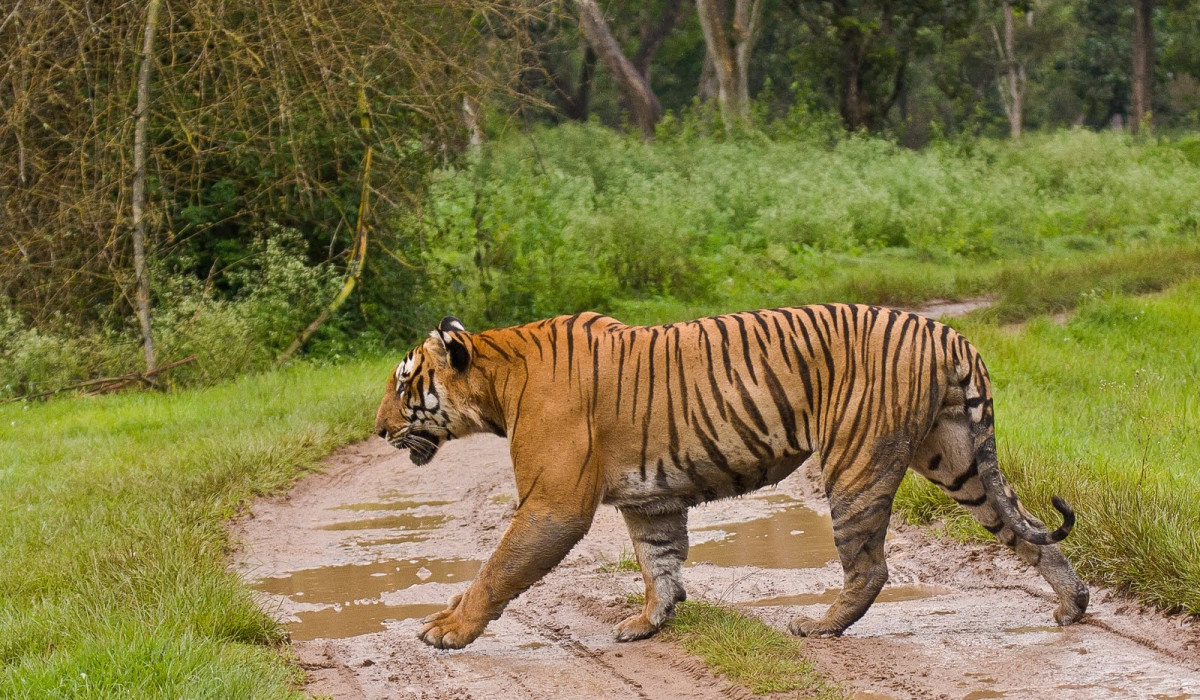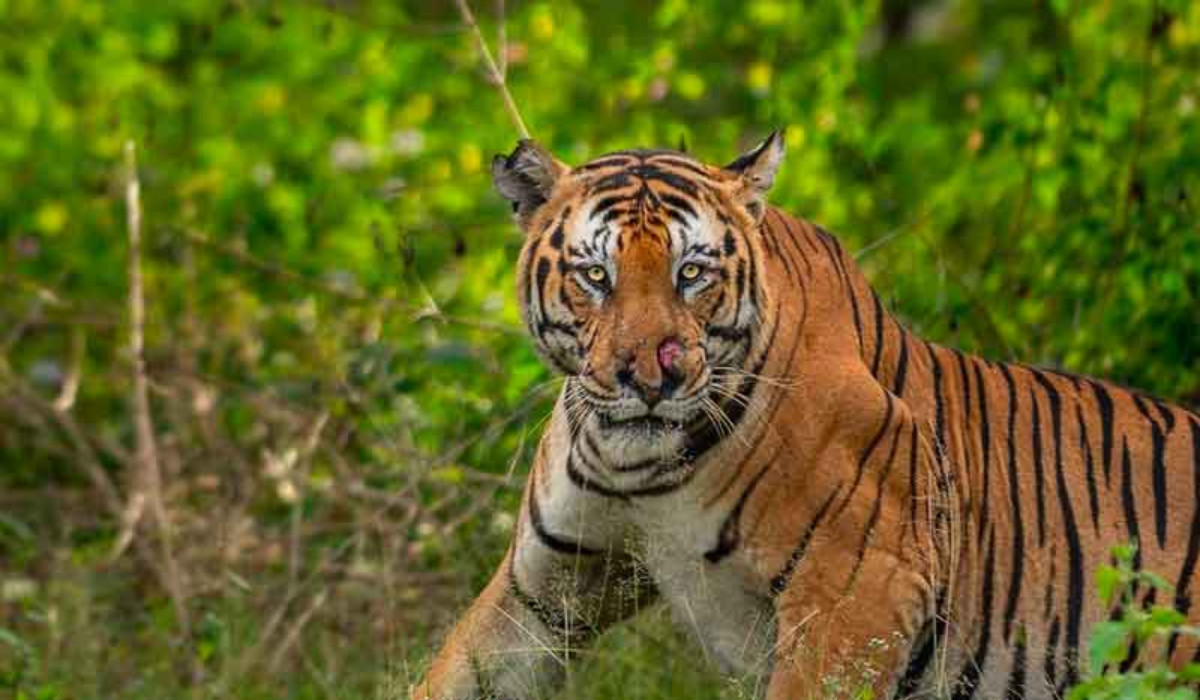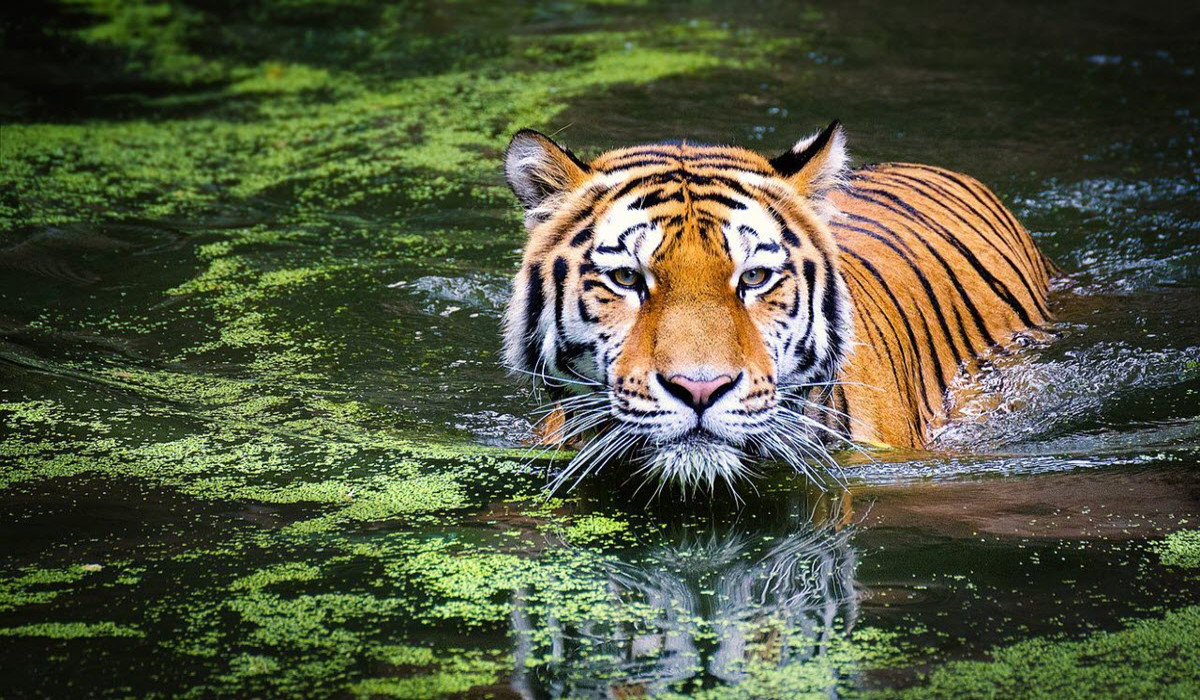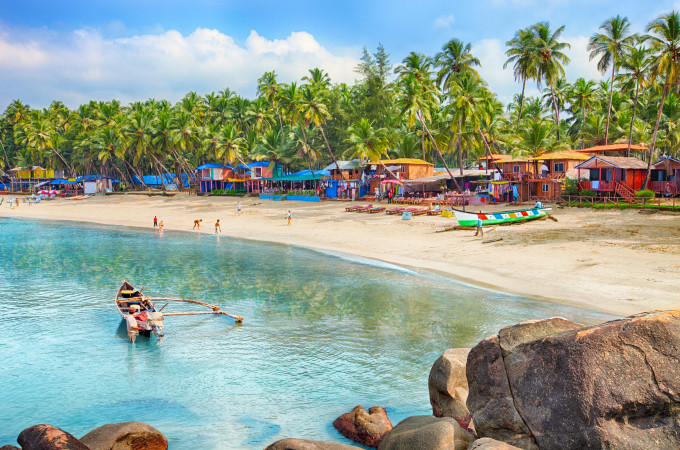One of the greatest reasons wildlife and nature lovers are drawn to India is the wildlife safaris that explore the rich range of biodiversity (jungles, rivers, and magnificent wildlife). The main attraction of these safaris is the Royal Bengal Tiger, an awesome creature unlike any other.
Tigers are notoriously elusive. Masters of disguise and stealth, these majestic animals are hard to spot in the wild.
Our local wildlife experts, therefore, compiled a list of National Parks and Tiger Reserves that give you the best shot at spotting tigers out in the wild. Our list covers all regions of India.
So, if you are traveling in only one particular region of India (say the Rajasthan in North or Kerala/Karnataka in South India), we have got you covered with a whole host of options. The list has been arranged in order of probability of tiger sighting. We begin with the best tiger-spotting places.
NOTE: Please note that during the Monsoon Months (Mid-June to September/Early October), most National Parks shut down for maintenance and fear of flash floods. So, plan your wildlife trips to India accordingly.
Summer in India (April-June) is quite intense and the mercury can rise up to 37-40°C. But that is also the best time for tiger safaris because the tigers have to stick close to water holes and reservoirs to stay hydrated. This makes spotting them easier than at other times of the year. So braving the heat is well worth the challenge.
Let our local travel experts help you make a non-obligatory travel and completely transparent plan that shows you the route, places to stay, transport modes and gives you an idea of the cost of the tour with a complete breakup.
Top 12 Tiger Safaris In India
With 106 National Parks and over 500 Wildlife Sanctuaries in India, you are really spoiled for choice and figuring out where to go can get quite confusing.
(Which is why) We have narrowed the list down to 12 places where you are almost guaranteed to spot tigers out on the prowl.
Contents
- 1. Ranthambore National Park (Sawai Madhopur, Rajasthan)
- 2. Bandhavgarh National Park (Madhya Pradesh)
- 3. Jim Corbett National Park (Uttarakhand)
- 4. Kanha National Park (Madhya Pradesh)
- 5. Kaziranga National Park (Assam)
- 6. Bandipur National Park (Karnataka)
- 7. Nagarhole National Park (Karnataka)
- 8. Pench Tiger Reserve (Maharashtra)
- 9. Tadoba Andhari Tiger Reserve (Maharashtra)
- 10. Periyar National Park (Kerala)
- 11. Satpura National Park (Maharashtra)
- 12. Gir National Park (Gujarat)
1. Ranthambore National Park (Sawai Madhopur, Rajasthan)

Abode of the Royal Bengal Tiger, the Ranthambore National Park is hands down the best place in all of India to go on a tiger-spotting safari. This wild outback in the Sawai Madhopur region of Rajasthan used to be the private hunting ground of the Maharaja of Jaipur.
Sprawling over 400 sq. km. this north Indian national park is considered to be the most popular in the country, and features in almost all itineraries of trips to Rajasthan. It is named after an ancient fort of the same name that’s located on its premises.
Ranthambore is the perfect second fiddle act to the cultural immersions of Rajasthan (in “Pink City” Jaipur, “Venice in the East” Udaipur, “Golden City” Jaisalmer, “Blue City” Jodhpur and Pushkar).
Best Time to Visit: March to June
Number Of Tigers in The Reserve: 80 as per the latest count in 2022 (25 tigers, 31 tigresses and 24 cubs)
Chance Of Spotting Tigers: One of the highest in the country.
Big City Nearby: Chandrapur (District Sawai Madhupur).
Tiger Safari Zones: Zone 01 to 06 and 10 have had the best sighting lately.
2. Bandhavgarh National Park (Madhya Pradesh)

The Central Indian State of Madhya Pradesh is one of the primary destinations in the country for wildlife and tiger safaris.
Why? Because, of all the states in India, Madhya Pradesh has the highest density of tigers per square mile on the planet. And, Bandhavgarh is only one of its many Tiger Reserves—albeit the best of the lot. (We will cover the rest later).
The Bandhavgarh National Park is nestled in the Vindhya Hills of the state. The landscape is characterized by a dense deciduous forest cover, steep ridges, meandering hills and vast meadows —making it an ideal habitat for tigers and a wide range of other wild species.
This erstwhile hunting ground of the Maharaja of Rewa gives Ranthambore a run for its money for the title of the best destination for a tiger safari in India. The first white tiger to ever be hunted (hunted by the Maharaja) is now on display on the property.
Best Time to Visit: November to June
Number Of Tigers in The Reserve: 60-70
Chance Of Spotting Tigers: Good
Big City Nearby: Umaria, Jabal Pur, Mandla
Tiger Safari Zones: Tala, Bamera and Magdi.
Other Tourist Attractions in The Regions: Khajuraho Temples (UNESCO World Heritage Site).
3. Jim Corbett National Park (Uttarakhand)

The Jim Corbett National Park is among the highest altitude national parks in India.
Nestled at a height of 1300-1400 feet above sea level in the Northern Himalayan State of Uttarakhand, this park is home to tigers and a whole range of exciting wildlife like Indian elephants, Himalayan Black Bears, Pangolins, jungle cats, leopards, fishing cats and langurs.
This pioneering National Park was established in 1936 (the oldest in India) under the British Raj and has been a model for other national parks to emulate on account of its trend-setting wildlife conservation efforts.
In 1956, the Indian Government named the park after the renowned naturalist and conservationist, Jim Corbett (it was previously named after Governor of United Provinces William Malcolm Hailey).
Best Time to Visit: December to June
Number Of Tigers in The Reserve: 252
Chance Of Spotting Tigers: High
Big City Nearby: Nainital (a popular Uttarakhand hill station known as “Lake Capital of India”)
Tiger Safari Zones: Durga Devi, Dhela, Bijarani, Dhikala and Jhirna.
Other Activities In The Region: Hill stations holiday in Nainital (Boat rides in the lake. Lakeside picnics). Rishikesh “Yoga Capital of the World” (famous for yoga, meditation and white water adventure sports in the Ganga River). Other hill stations of Uttarakhand like Mussoorie, Auli, Almora, Dhanualti etc)
4. Kanha National Park (Madhya Pradesh)

Located in the dense Maikal Moutain Range in a topography that can be characterized as a highland, Kanha is a magnificent habitat for Bengal Tiger.
Comprising a thick forest cover, vast grasslands, and abundant water reservoirs, Kanha is a great place for tigers to thrive and on a predatory hunting prowl for prey.
Other exotic creatures like Dhole (Indian Wild Dogs), sloth bears, Barasingha (swamp deer) and leopards also find their home in Kanha.
Aside from tigers, the BARASINGHA (Swamp Deer) is one of crown jewels of Kanha.
Best Time to Visit: November to June
Number Of Tigers in The Reserve: 500
Chance Of Spotting Tigers: Very High.
Big City Nearby: Jabalpur
Tiger Safari Zones: Kanha, Mukki, Kisli, Sarhi
Other Activities In The Region: Kanha Museum, Mandla, Kowardha Palace, Jabalpur, Pachmarhi (Hill Station). Panna National Park, Raneh Water Falls, Ajigarh Fort, Khajuraho Temples.
5. Kaziranga National Park (Assam)

So far we have covered mostly Tiger-centric destinations where the primary attraction is (of course) the Royal Bengal Tiger. In this national Park, however, tigers share their abode with another magnificently exotic animal—the rare one-horned rhinoceros.
Declared a UNESCO World Heritage Site, the Kaziranga National Park is home to the world’s two-thirds population of one-horned rhinos (their name stands at 2,613 as per the latest count).
Located in the Golaghat and Nagaon districts of the North-Eastern state of ASSAM, Kaziranga is also home to a large number of tigers and has been declared by UNESCO as “an Important Bird Area” due to a rich variety of indigenous and migratory birds found here.
Four rivers (including the sacred Brahmaputra), a large number of smaller water bodies, and a landscape of marshlands, swamps, tropical moist broadleaf forests and elephant grass make for an excellent habitat for a rich variety of mammals, reptiles, and avian creatures.
Best Time to Visit: November to April
Number Of Tigers in The Reserve: 118
Chance Of Spotting Tigers: Good
Big City Nearby: Guwahati (47 Miles), Dimapur and Jorhat.
Tiger Safari Zones: The Central (Bagori) Zone, Western (Agaratoli) Zone And Eastern Range (Ghorakati Range).
6. Bandipur National Park (Karnataka)

The erstwhile hunting ground of for the Nizam and Maharajas of Mysore (the “City of Palaces” —now the Bandipur National— in the southern Indian state of Karnataka is a major wildlife destination in the region.
The magnificent Kabini river snakes it way through this national park and provides sustenance to the wildlife and other species here. Bandipur is home to tigers, lions, antelopes, Indian Gaurs, Asiatic Elephants and many other species.
Together with Nagarhole National Park which is located on the other side of the Kabini River, it provides visitors with an opportunity to kill two birds with one stone i.e., you can go on two different wildlife safaris in one go in Karnataka.
Best Time To Visit: October To March.
Number Of Tigers In The Reserve: 231
Chance Of Spotting Tigers: High
Big City Nearby: Bandipur, Masingudi, Gunlupet.
Tiger Safari Zones: East, North East And Central.
Other Tourist Attractions Nearby: Nagarhole National Park. Mudumalai National Park, Wayanad Wildlife Sanctuary, Rajiv Gandhi National Park. Ooty (One Of The Best Hill Stations In South India).
7. Nagarhole National Park (Karnataka)

Bandipur’s twin on the other side of the Kabini river, the Nagarhole National Park is a land of exotic Teak and Sandalwood forest trees. There is a fragrant aroma of Sandalwood when you are in the midst of its foliage.
Nestled in the Brahmagiri mountains, the landscape of Nagarhole features lush green forest cover, cascading waterfalls and ridges.
Aside from providing tigers the perfect habitat to make a home and find prey in, this topography also makes Nagarhole a great destination for river adventures like white-water rafting, boating, and fishing.
Best Time to Visit: October to April
Number Of Tigers in The Reserve: 125
Chance Of Spotting Tigers: Very Good
Big City Nearby: Mysore, Bengaluru,
Tiger Safari Zones: Zone A And B
Other Tourist Attractions Nearby: Mysore “The City of Palaces”/ Bandipur National Park, Coorg (Hill Station),
8. Pench Tiger Reserve (Maharashtra)

Have you read Rudyard’s Kipling story “The Jungle Book” —or watched the several movies, TV shows, cartoons and animations it spawned —and wondered if the wild exciting world Kipling creates is real?
We are happy to break it you to that the Jungle Book World is real and it exists in the PENCH NATIONAL PARK in MAHARASHTRA.
Kipling was born and grew up in this part of India, where his father worked. The Jungle Book was inspired by this region.
The Pench Baghvan (“Bagh” means a tiger, and “van” means the home of) in located a mere 60 miles (two hours drive) from the city of Nagpur in the state of Maharashtra.
This “Home of Tiger” is another great place to go on a wildlife encounter in Maharashtra.
Best Time to Visit: February to April
Number Of Tigers in The Reserve: 44 As Per the Latest Count In 2017.
Chance Of Spotting Tigers: Fair
Big City Nearby: Seoni, Nagpur
Tiger Safari Zones: Jamtara, Teliya, Rukhad, Turia and Karmajhiri
Other Tourist Attractions Nearby: Kanha National Park, Sanchi (Buddhist Ancient Temples), Ramtek (Ancient Temple Town of Jain Origin). Pachmarhi Hill Station.
9. Tadoba Andhari Tiger Reserve (Maharashtra)

Having covered national Parks in North and North East India (Rajasthan, Uttarakhand, Assam), we now move to Maharashtra, the economic hub of India (home to some of India’s well-known cities like Mumbai, Pune, and Nagpur).
As per the latest count carried out in 2020, the Tadoba Tiger Reserve (located in the Chandrapur district) is home to 88 Bengal Tigers.
Stretching over 577 sq. km. of area, Tadoba gets its name from the deity “Tadoba” worshipped by the tribes of the region. The tribe believes that the deity resides in its awe-inspiring and jaw-droppingly dense foliage.
Aside from tigers, Tadoba is also home to creatures like Indian Gaurs (Bisons), Sambar (stags), Indian Cobra, honey badgers, Dhole (wild dogs), Russell Vipers, and the endangered Indian python.
With a range of creatures like these, the reverence of the tribes for this magnificent makes a lot of sense.
Best Time to Visit: February to June
Number Of Tigers in The Reserve: 43
Chance Of Spotting Tigers: Good
Big City Nearby: Chandrapur
Tiger Safari Zones: Kolsa, Moharli And Tadoba
Other Tourist Attractions Nearby: Pench National Park, Nagzira Wildlife Sanctuary, Raipur (City), Raigarh Fort, Kanha National Park, Erai Dam. Nevegaon National Park, Mahkali Mandir (Temple) In Chandrapur.
10. Periyar National Park (Kerala)

The Southern Indian state of KERALA “GOD’S OWN COUNTRY” is one of the most visited parts of India (second only perhaps to Rajasthan).
This coastal region of India is famous for its pristine beaches, relaxing backwaters, Ayurveda-inspired luxury resorts and spas, delectable cuisine and lots of cultural attractions.
But Kerala is not without its wildlife allure. The Periyar National Park in the Idukki region spans over 357 sq miles of tropical evergreen deciduous jungles and montane grasslands.
If you are in town in Kerala for the beaches, Ayurveda and the backwaters, it is a wonderful idea to add a wildlife safari at the Periyar National Park to your itinerary.
Periyar is home to Bengal Tigers (including the mythical White Tiger), 45 species of reptiles, 40 species of fish and a wide range of other mammals. These include Indian Gaurs (bisons), Asiatic Elephants, sloth bears, Indian Wild Dogs and 266 species of birds.
Best Time to Visit: September to June
Number Of Tigers in The Reserve: 35
Chance Of Spotting Tigers: Fair
Big City Nearby: Kottayam, Kochi.
Other Attractions Near Periyar: Ayyappa Swamy Temple, Thekkady (Hill Station Famous for Its Beauty and Tea Plantation Tours, Yodha Village (Immersions).
11. Satpura National Park (Maharashtra)

Located in the Narmadapuram District of Madhya Pradesh the Satpura Tiger Reserve (also known as the Satpura National Park) is another less-crowded and offbeat safari destination in the state of Madhya Pradesh.
The National Park gets its name from the Satpura Mountain Range it is nestled in. Spanning over an area of 534 sq km (202 sq miles) features a highland ecosystem (average height 1,000-1,352 meters).
With a topography of sandstone peaks, ravines, and dense forest cover, Satpura is home to tiers, Sambar Deer, Chital, four-horned antelope, flying squirrels, foxes and porcupines.
Best Time To Visit: Feb To June
Number Of Tigers In The Reserve: 50
Chance Of Spotting Tigers: Fair
Big City Nearby: Pachmarhi (Hill Station And Town, Considered To Be A Very Popular Tourist Destination In Madhya Pradesh).
Other Attractions Near Periyar: Bori Wildlife Sanctuary. Pachmarhi Wildlife Sanctuary.
12. Gir National Park (Gujarat)

According to statistics, there are only 674 Asiatic lions left on the planet. These creatures (also known as Persian Lions) are native to India and used to prowl the hunting grounds from Central India to as far as the Middle East and Mesopotamia (Iraq, Syria) and Persia as late as the 19th century.
Their numbers have shrunk due to merciless hunting and the shrinking of their natural habitat. The Gir National Park in Gujarat (districts of Junagadh, Gir, Somnath and Amreli) is the last-standing natural habitat of these lions.
This National Park in the Western State of Gujarat (the former hunting ground of the Nawab of Junagarh) is the only place in the world lions and tigers have historically lived in coexistence.
Best Time to Visit: December to March.
Number Of Lions in The Reserve: 674 Lions (As Of 2020)
Chance Of Spotting Tigers: Fair
Estimated Cost Per Person:
Big City Nearby: Talala (Gir)
 Skip to main content
Skip to footer
Skip to main content
Skip to footer























